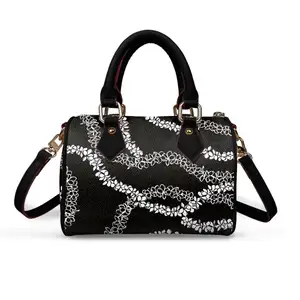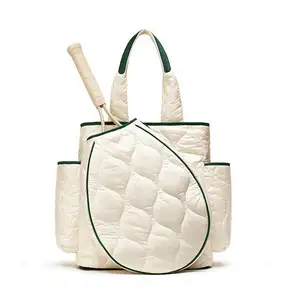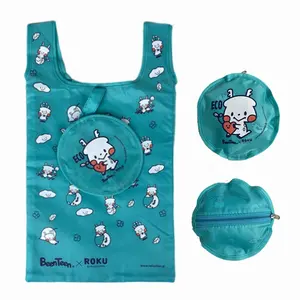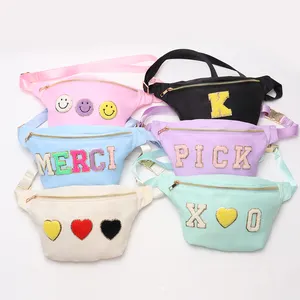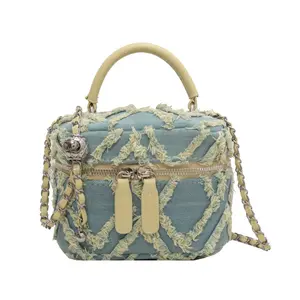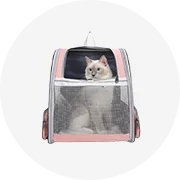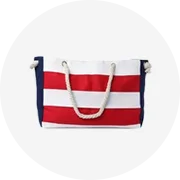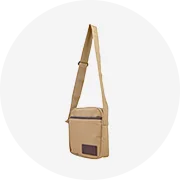Phổ biến trong ngành của bạn






Đục lỗ đục lỗ trần monel kim loại thép không gỉ tấm đục lỗ monel tấm màn hình kim loại đục lỗ
10,30 US$ - 12,50 US$
Đơn hàng tối thiểu: 50 Cái







Tấm Lưới Kim Loại Đục Lỗ Cho Đồ Nội Thất Ngoài Trời Hoặc Trong Nhà
5,88 US$
Đơn hàng tối thiểu: 1 Mét vuông




Trung Quốc Brass Panel tường trang trí kim loại đục lỗ tấm màn hình Bảng điều chỉnh Đục Lỗ Nhôm hàng rào Bảng điều khiển cho cửa sổ và cửa
3,57 US$ - 4,56 US$
Đơn hàng tối thiểu: 50 Cái







Tấm thép đục lỗ đục lỗ tấm/tấm kim loại đục lỗ/tấm đục lỗ 2.5mm
17,99 US$ - 18,99 US$
Đơn hàng tối thiểu: 1 Mét vuông







Nhôm đục lỗ Tấm Nhà cung cấp tùy chỉnh kích thước trang trí đấm tấm kim loại tấm mặt tiền với lỗ
1,00 US$ - 4,00 US$
Đơn hàng tối thiểu: 20 Mét vuông







Chất Lượng Tốt Nhất Lỗ Tròn Nhỏ Thép Không Gỉ 304 Tấm Kim Loại Đục Lỗ Với Giá Thấp Tấm Đục Lỗ
15,50 US$
Đơn hàng tối thiểu: 100 Cái




Tấm Kim Loại Đục Lỗ Giá Tốt Nhất 3Mm (Nhà Máy, Nhà Sản Xuất)
0,39 US$ - 5,20 US$
Đơn hàng tối thiểu: 1000 Mét vuông






Giá tốt nhất trang trí mạ kẽm thép không gỉ nhôm đục lỗ tấm kim loại
3,10 US$ - 5,20 US$
Đơn hàng tối thiểu: 10 Mét vuông






Giá tốt nhất! Rãnh lỗ thép không gỉ linh hoạt mỏng đục lỗ tấm kim loại
1,30 US$ - 4,80 US$
Đơn hàng tối thiểu: 100 Mét vuông






Chất Lượng Tốt Nhất Nhỏ Lỗ Tròn Thép Không Gỉ 304 Tấm Kim Loại Đục Lỗ Với Giá Thấp
35,85 US$ - 36,45 US$
Đơn hàng tối thiểu: 80 Mét


Chất lượng hàng đầu tấm kim loại đục lỗ nhà sản xuất nhà cung cấp từ Ấn Độ cho xuất khẩu với giá tốt nhất
21,76 US$
Đơn hàng tối thiểu: 100 Cái






2024 Nhà Máy Giá Tốt Nhất Tùy Chỉnh Thép Không Gỉ Mạ Kẽm Kim Loại Lưới Bảng Điều Chỉnh Tấm Cuộn Hàng Rào Lục Giác Đục Lỗ Kim Loại Tấm
1,00 US$ - 6,00 US$
Đơn hàng tối thiểu: 1000 Mét vuông
Các tìm kiếm liên quan:
tấm đục lỗ giá thấp304l đục tấm nhà sản xuấtđục lỗ philippinestấm đục lỗ 10mmblack perforated sheet suppliertấm đục lỗ họa tiếttấm đục lỗ dày 2.0mmtấm đục lỗ chống trượttấm 3003 nhôm đục lỗtấm đục lỗ conidurđục lỗ tấm fabricatortấm đục lỗ giá rẻđục lỗ tấm trực tiếp nhà máytấm đục lỗ giá thấpnhà cung cấp tấm đục lỗ












Nhà Máy Giá Mạ Kẽm Đấm Lưới Đục Tấm/Đục Nhôm Sắt Tấm Thép Đục Lỗ Lưới Kim Loại Lưới
4,30 US$ - 9,80 US$
Đơn hàng tối thiểu: 20 Mét vuông






Tấm Lưới Dây Kim Loại Đục Lỗ Bằng Thép Không Gỉ Mạ Kẽm Giá Tốt Nhất
18,00 US$ - 20,00 US$
Đơn hàng tối thiểu: 10 Cái






Giá tốt nhất nhôm tấm kim loại đục lỗ với lỗ tròn tổ ong đấm tấm màn hình kim loại đục lỗ cho trang trí
4,50 US$ - 5,20 US$
Đơn hàng tối thiểu: 50 Mét






Chất lượng tốt nhất Nhỏ lỗ tròn 304 thép không gỉ tấm kim loại đục lỗ với giá thấp tấm đục lỗ
2,98 US$ - 13,60 US$
Đơn hàng tối thiểu: 1 Đơn vị






Giá tốt nhất SUS 304 đục lỗ kim loại tấm/lỗ tròn đục lỗ kim loại lưới/rãnh lỗ đục lỗ kim loại tấm
46,00 US$
Đơn hàng tối thiểu: 1 Cái






Giá tốt nhất tùy chỉnh lỗ đục lỗ kim loại đục lỗ tấm thép không gỉ tấm kim loại đục lỗ
14,64 US$ - 15,61 US$
Đơn hàng tối thiểu: 100 Cái





Tấm Nhôm Đục Lỗ Giá Thấp Chuyên Nghiệp Bán Chạy Tấm Đục Lỗ Loa Đục Lỗ Lưới Kim Loại
6,90 US$ - 8,60 US$
Đơn hàng tối thiểu: 1 Cái






Conidur Rãnh Lỗ Thép Không Gỉ Linh Hoạt Mỏng Đục Lỗ Tấm Kim Loại (Giá Tốt Nhất)
5,80 US$ - 16,80 US$
Đơn hàng tối thiểu: 10 Cái






Lỗ Tròn Nhỏ Bằng Thép Không Gỉ 304 Tấm Kim Loại Đục Lỗ
25,99 US$ - 34,99 US$
Đơn hàng tối thiểu: 20 Cái






Tấm Nhôm Đục Lỗ Tròn/Tấm Đục Lỗ Lowes/Tấm Đục Lỗ (Giá Tốt Nhất)
9,00 US$ - 9,90 US$
Đơn hàng tối thiểu: 100 Mét vuông
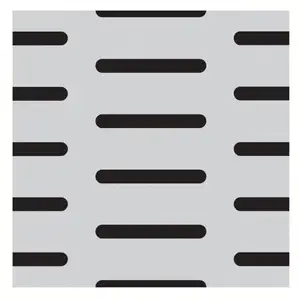





Tấm Lưới Kim Loại Đục Lỗ Bằng Nhôm Hình Lục Giác Mạ Kẽm Có Độ Dày 1Mm Của Trung Quốc
8,50 US$
Đơn hàng tối thiểu: 100 Mét vuông


















Trung Quốc sản xuất với nhà máy trực tiếp cung cấp 2x2 4x4 inch 316L thép không gỉ lưới tấm với tấm đục lỗ
1.000,00 US$ - 1.600,00 US$
Đơn hàng tối thiểu: 5 Tấn






Tốt nhất bán ing nướng mở rộng lưới kim loại tấm chất lượng cao đục lỗ kim loại sử dụng kim loại mở rộng giá thấp
6,00 US$ - 10,00 US$
Đơn hàng tối thiểu: 20 Cái






Giá tốt nhất tùy chỉnh mạ kẽm mở rộng Kim Loại Gothic lưới kim cương tấm cho xây dựng
7,58 US$ - 15,95 US$
Đơn hàng tối thiểu: 10 Mét vuông






Giá tốt nhất nhà máy bán hàng trực tiếp kim cương Mini lỗ nhôm mở rộng lưới kim loại cuộn và tấm cho phần tử Lọc
1,50 US$ - 2,00 US$
Đơn hàng tối thiểu: 100 Mét vuông






Trang trí treo trần nhôm mở rộng tấm lưới kim loại
2,00 US$ - 8,00 US$
Đơn hàng tối thiểu: 500 Mét vuông






Tấm Kim Loại Đục Lỗ Mạ Kẽm Chất Lượng Cao Sản Xuất Tại Trung Quốc Giá Tốt
6,00 US$ - 8,90 US$
Đơn hàng tối thiểu: 2 Cái






Conidur rãnh lỗ thép không gỉ linh hoạt mỏng đục lỗ tấm kim loại (giá tốt nhất)
8,00 US$ - 9,50 US$
Đơn hàng tối thiểu: 50 Mét vuông






Trang trí đục lỗ kim loại tấm lưới 1.0mm Độ dày đục lỗ tấm
3,80 US$ - 5,60 US$
Đơn hàng tối thiểu: 1 Mét vuông






Loại Phẳng (Mịn) Bề Mặt Đồng Dày Và Nhôm Lọc Lưới Kim Loại Mở Rộng Philippines
2,10 US$ - 9,98 US$
Đơn hàng tối thiểu: 100 Mét vuông






Bán Sỉ Tấm Lưới Kim Loại Mở Rộng Siêu Mịn Bằng Nhôm Để Sản Xuất Vỉ Đập Muỗi Chạy Điện
4,60 US$ - 7,30 US$
Đơn hàng tối thiểu: 200 Mét vuông




Nguồn tốt nhất của đồng bằng dệt đục lỗ dây thép tấm lưới đấm tấm kim loại
18,00 US$ - 22,00 US$
Đơn hàng tối thiểu: 50 Cái






Giá tốt nhất mở rộng tấm kim loại hàng rào hàng rào 4x8 tấm của bức tường Rèm kim loại mở rộng
8,00 US$ - 10,00 US$
Đơn hàng tối thiểu: 50 Cái






Nhôm pvdf thép carbon thấp đục lỗ tấm kim loại với kích thước tùy chỉnh
9,99 US$ - 23,40 US$
Đơn hàng tối thiểu: 10 Mét vuông
Vận chuyển mỗi chiếc: 7,31 US$






Giá Tốt Nhất Nhôm 4X8 Lỗ Nhỏ Dây Lưới Kim Loại Mở Rộng Giá Cho Tấm Và Cuộn Kim Loại Mở Rộng
0,60 US$ - 0,80 US$
Đơn hàng tối thiểu: 500 Mét vuông
Các danh mục hàng đầu
Giới thiệu về tấm đục lỗ giá tốt nhất
Dù cho một bữa tiệc cầu kỳ, cho văn phòng hay cho một chuyến đi chơi bình thường, hãy tìm sự hoàn hảo. tấm đục lỗ giá tốt nhất trên Alibaba.com .. tấm đục lỗ giá tốt nhất đã trở nên không chỉ là một vật dụng có chức năng để đựng các vật dụng hàng ngày. Bây giờ chúng được coi là một phụ kiện thiết yếu và thường được phối hợp với phần còn lại của trang phục của một người để có một cái nhìn thời trang. Những cái này. tấm đục lỗ giá tốt nhất thường chứa nhiều phần tô điểm và phần tử thiết kế để nâng cao thương số phong cách của một người.
Các. tấm đục lỗ giá tốt nhất được cung cấp trên Alibaba.com được làm từ da hoặc vải có chất lượng tốt nhất, để đảm bảo giao diện và cảm nhận cao cấp. Những cái này. tấm đục lỗ giá tốt nhất có túi, bao, khóa kéo và tay cầm được thiết kế tốt để cung cấp cho người dùng sự tiện lợi tối đa .. tấm đục lỗ giá tốt nhất có cả kiểu dáng truyền thống và cổ điển cũng như những mẩu tuyên bố kỳ quặc có khả năng thu hút sự chú ý. Những người đam mê thời trang có thể sẽ rất vui mừng bởi hàng loạt các sản phẩm được cung cấp.
tấm đục lỗ giá tốt nhất có nhiều kích thước và hình dạng khác nhau. Chúng bao gồm từ những món cực kỳ nhỏ dành cho mục đích trang trí đến những món lớn hơn có nhiều vách ngăn và túi cho những người cần mang nhiều đồ .. tấm đục lỗ giá tốt nhất có sẵn ở dạng rắn cũng như được đính đá quý, đá, và thậm chí cả kim loại quý .. tấm đục lỗ giá tốt nhất có thể cứng và không linh hoạt hoặc được làm từ vật liệu mềm và co giãn, tùy thuộc vào nhu cầu của người dùng. Chúng có thể trong suốt hoặc có màu đồng nhất và có thể được làm thủ công cẩn thận bằng gương và các vật trang trí khác.
Tăng kho ngoại hình của bạn với phạm vi đáng yêu và hấp dẫn này. tấm đục lỗ giá tốt nhất có sẵn trên Alibaba.com. Với các ưu đãi và chiết khấu vô cùng hấp dẫn, hãy mua bao nhiêu tùy thích mà không lo vượt quá ngân sách của bạn .. tấm đục lỗ giá tốt nhất nhà cung cấp và người bán buôn cũng có thể lấy những mặt hàng đáp ứng tốt nhất sở thích của họ với mức ưu đãi tuyệt vời.
Các. tấm đục lỗ giá tốt nhất được cung cấp trên Alibaba.com được làm từ da hoặc vải có chất lượng tốt nhất, để đảm bảo giao diện và cảm nhận cao cấp. Những cái này. tấm đục lỗ giá tốt nhất có túi, bao, khóa kéo và tay cầm được thiết kế tốt để cung cấp cho người dùng sự tiện lợi tối đa .. tấm đục lỗ giá tốt nhất có cả kiểu dáng truyền thống và cổ điển cũng như những mẩu tuyên bố kỳ quặc có khả năng thu hút sự chú ý. Những người đam mê thời trang có thể sẽ rất vui mừng bởi hàng loạt các sản phẩm được cung cấp.
Tăng kho ngoại hình của bạn với phạm vi đáng yêu và hấp dẫn này. tấm đục lỗ giá tốt nhất có sẵn trên Alibaba.com. Với các ưu đãi và chiết khấu vô cùng hấp dẫn, hãy mua bao nhiêu tùy thích mà không lo vượt quá ngân sách của bạn .. tấm đục lỗ giá tốt nhất nhà cung cấp và người bán buôn cũng có thể lấy những mặt hàng đáp ứng tốt nhất sở thích của họ với mức ưu đãi tuyệt vời.
